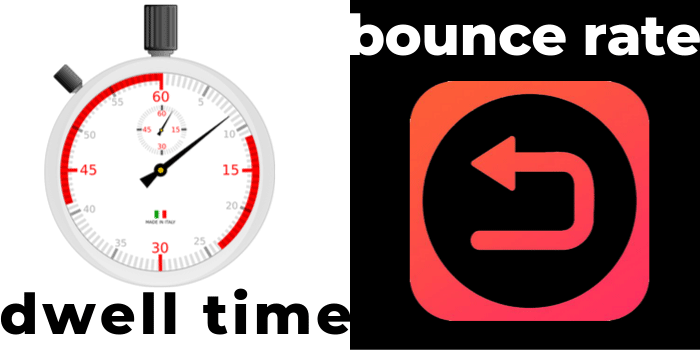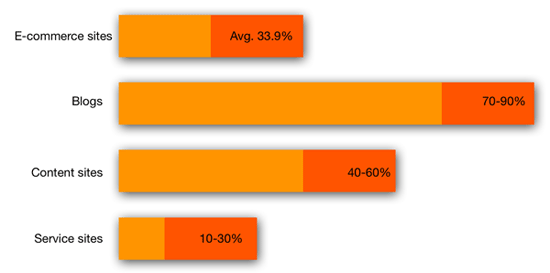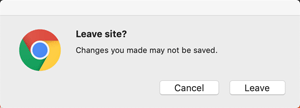Do dwell time and bounce rate matter? The short answer is, dwell time - yes because it's part of SEO, but bounce rate - not so much. Not so much doesn't mean you can totally ignore it. Depending on the type of your page, it's important to know whether the rate is appropriate or not and why that is. Dwell time and bounce rate refer to the quality of content differently. Just by understanding these two terms, you'll know the area of improvements. You may find a subject such as this pretty boring - I do to be honest. But something to look after to keep creating a good visitor experience.

Dwell Time - What Is It?
Dwell time is the length your visitor stays on your particular webpage. Bing says that it's one of the factors that they take into consideration to help it determine the quality of your site. It says a minute or two indicates that the visitor has consumed the content, while less than a couple of seconds can be viewed as it's not capturing the visitor's interest.
On the other hand, Google has never specifically mentioned the term "dwell time" but from the fact that the algorithm is a machine-learning integration, effectively the same principle's applied - the longer the visitors stay on your page, the better.
How To Increase Dwell Time
Apart from the obvious way to improve the average dwell time - write "engaging" content! - there are quite a few gray hat methods that you can take to get your visitors to stay.
#1 Place Videos
Video not only adds value to your content but to consume your visitor's time as long as the length of it. A concise, relevant and appealing video will keep them on your page. Good idea to embed it midway the blog post, and summarize the video content in the text (such as in bullet points) underneath.
#2 Encourage Visitors To Leave A Comment
Ask them an open question and to answer by leaving a comment.
You can cast a question earlier on in your post and take your visitors right down to the bottom of the post by using an anchor tag.
This doesn't mean the visitors will happily leave a comment as requested. They may be likely to scroll up to skim through the rest of the content. But so long as the question is part of the flow of the topic and thought-provoking, it will keep your visitors stay longer.
#3 Maximize Your Page Speed
Page loading speed itself is a ranking factor, but a page that takes too long to open will send visitors back to the SERP and let them go elsewhere. According to Neil Patel, 40% of people leave a website that takes more than 3 seconds to load.
#4 Use A Responsive Popup
Popups are great to generate leads and call to action, but they're undoubtedly annoying for visitors. Make sure yours pops up nicely and swiftly. A popup that freezes up the main article page or one that's not easily closable can encourage visitors to abandon.
#5 Visually Mind-boggle Them
I don't mean optical illusion images. Diagrams, graphs or 4-frame comic strip/cartoons can keep them on your site a little longer.
Bounce Rate - What Is It?
Bounce rate is the percentage of visitors who enter your site but leave (bounce) without taking an action such as clicking a CTA button, link to view another page or filling out a form.
If 100 people visit your webpage but 90 of them leave without taking any actions, then the bounce rate will be 90%. High bounce rate = less engaging. The rates can be checked on Google Analytics.
Bounce rate is not considered to be a major search engine ranking factor for several reasons;
- The rate varies depending on the type of page, site or industry. A single page with no link can contain useful information.
- Easily manipulative, e.g. clickbait just to reduce bounce rate.
- External factors can distract users. If they open a new tab to browse another site or check their email and come back to the site later on, it'll still count as a bounce.
According to Clicktable.com, the average bounce rate for e-commerce sites is 33.9%. For blogs, somewhere between 70-90%, content sites 40-60% and service sites around 10-30% respectively.

Bounce rates per industry
How To Reduce Bounce Rates
There's no point in doing whatever it takes to reduce bounce rates. For example, randomly placed internal links before a barely noticeable CTA button will defeat the purpose of your campaign within the page. You want to try the following ways to decrease bounce rates wisely.
#1 Use Related Posts/Popular Posts Section
Show related posts at the bottom of your page and/or place a popular posts widget in the sidebar, so that the visitors have an easy option to browse other pages.
#2 Optimize Loading Time
For the same reason mentioned earlier, try maximizing the loading speed - visitors will abandon if your page takes more than several seconds to open up.
#3 Make Sure Your Popup Is Not Annoying
Again for the same reason - a popup that appears too fast and stays sticky for a long time can let your visitors leave.
#4 Use Exit-Intent Popup
An exit popup can also annoy users but is proven to be effective in holding them back.

Exit popup
#5 Add Entertainment/Engagement Value
Place a quiz widget within the post to draw attention, for example. As long as the quiz or survey that you cast is relevant and interesting, it works. Make that a further CTA is placed at the end of the quiz/survey (e.g. social share buttons, link to a product page).
Read Also: Thrive Quiz Builder Review
#6 Make The Page Easy On The Eyes
Easy navigation - clear menu at the top, clearly visible link to "About Us" or "Contact Us" - is important as well as good readability. An adequate number of subheadings, occasional images, each paragraph not too long.
#7 Use Breadcrumb Navigation
Breadcrumb navigation helps visitors to know where they landed and can also help them check other pages in the same category easily.

Breadcrumb
#8 Add More Internal Links To Open A New Tab
Placing external and internal links is a vital SEO technique anyway, but make sure the syntax target="_blank" is added to open a new tab, so that your visitor still has your original page open in the browser. Without it, your visitors will simply leave your site by clicking an external link, which will bring up the bounce rate.
Decrease your Bounce Rate by Neil Patel
Here's a very brief but very useful video by Neil, explaining 4 ways (plus one!) to decrease your bounce rate, that are;
- Show your product or content FIRST.
- Make sure your text size is large enough.
- Make your web pages minimalistic.
- Cross-link.
- Add images.
Dwell Time and Bounce Rate – Leave Your Comment Below!
I hope the above tips will help increase the engagement value of your web pages. As you can see, there's no point tweaking your page to extend the dwell time if the content is low quality. There's no point trying to reduce the bounce rate either, if you ignore the page intent. What's your opinion? Or do you have any questions? Leave your comment.

You cannot always improve dwell time or bounce rate I have tried all kinds including your suggestions but come to the conclusion that some things are beyond my control. Some times you have to keep doing what you do not worrying about visitors.
Hi Geoff, thanks for sharing your thoughts. I see what you mean, you cannot be obsessed with the rates. But I still believe that the methods I listed here can all be done and they do help increase dwell time and reduce the bounce rate. If you need any help, don’t hesitate to give us a shout. I wish you all the best!
This is just the information I needed. It’s good for me to know that bounce rates don’t matter. My friends say their bounce rates are less than 30 percent but it was hard to believe because their shop is not selling many products. Why is that I still don’t know but it must happen if there are several elements. I try to use your information fully for my website.
Hi Rakesh, just as mentioned in the post, 30% seems to be the average for an eCommerce site – think about when you visit an online shop. I never visit one and leave without clicking, unless the shop specialty is out of my interest, e.g. children’s toys, women’s lingerie, etc. Thanks for your comment!
Hi Ray, thank you for the insightful article. I’ve heard about the bounce rate every now and again but have never heard about the dwell time. I didn’t think about what was affecting the SEO before but it all makes sense to me now. The longer they stay, it means they spend a lot of time showing interest to your website. Google will know that your website is helpful for other people so they need to introduce your website and rank it higher.
I find difficult to understand the bounce rate because if you have as many links people will surely click one of them but if you do that it can make your site look like a spam. It must be a difficult job to find the balance. Thank you for your article, it was very interesting for me to read.
Hi Sam, thanks for sharing your thoughts. It’s best to aim to create compelling content first, then think about the usability, i.e. how it may affect the bounce rate… If you focus on these secondary factors too much, you might forget that your site may look spammy, like you say.